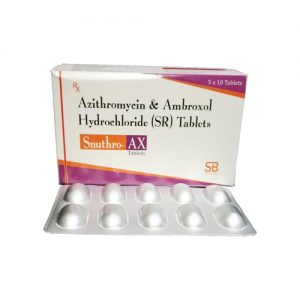Description
Tranexamic 100mg inj– Trymic Injection is made up of the drug named Tranexamic which is used in the treatment of bleeding. Tranexamic Acid is a medication that helps stop or lessen bleeding for a short time in conditions such as heavy periods, dysfunctional uterine bleeding, nosebleeds, tooth removal, and after prostate or bladder surgery. It is an anti-fibrinolytic, which means it prevents the breakdown of blood clots to control excessive bleeding during periods or after surgery.
Uses of Tranexamic Injection
Tranexamic Injection is primarily used to prevent or control excessive bleeding (hemorrhage) in various medical conditions. It works by inhibiting the breakdown of blood clots, thereby promoting clot formation and reducing bleeding. Tranexamic Injection is commonly used in the following situations:
- Surgery: Tranexamic Injection is often administered before, during, or after surgical procedures to reduce the risk of excessive bleeding, especially in surgeries involving high blood loss, such as cardiac surgery, orthopedic surgery, and trauma surgery.
- Menstrual Disorders: Tranexamic Injection is prescribed to women experiencing heavy menstrual bleeding (menorrhagia) to help reduce the amount and duration of menstrual bleeding.
- Dental Procedures: Tranexamic Injection may be used in dental procedures, such as tooth extraction or oral surgery, to minimize bleeding and promote faster healing.
- Hemorrhagic Conditions: Tranexamic Injection is also used in the treatment of certain hemorrhagic conditions, including bleeding disorders such as hemophilia and von Willebrand disease.
Precautions to use of Tranexamic Injection
Before using Tranexamic Injection, it is important to consider the following precautions:
- Inform your healthcare provider if you have a known allergy to tranexamic acid or any other ingredients in the injection. Allergic reactions to Tranexamic Injection are rare but can be serious and may include rash, itching, swelling, or difficulty breathing.
- Tranexamic Injection should be used with caution in patients with impaired kidney function, as the drug is primarily excreted by the kidneys. Dosage adjustments may be necessary based on the degree of renal impairment.
- The safety of Tranexamic Injection during pregnancy and breastfeeding has not been established. Consult your doctor before using this medication if you are pregnant, planning to become pregnant, or breastfeeding.
Direction to use of Tranexamic Injection
Tranexamic Injection is administered by healthcare professionals, usually by intravenous (IV) infusion or injection into a vein. The dosage and frequency of administration will depend on the patient’s medical condition, the severity of bleeding, and other factors. It is important to follow your doctor’s instructions regarding the dosage and duration of treatment.
Possible Side Effects of Tranexamic Injection
There are the common side effects of Tranexamic Injection:
- Joint pain
- Headache
- Back pain
- Vomiting
- Nausea
- Abdominal pain
- Fatigue
- Diarrhea















